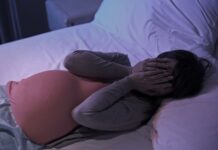Consolidated sleep is vital for both physical and mental well-being. Yet, our ability to maintain uninterrupted nighttime sleep decreases as we age. The sleep-wake pattern tends to become fragmented, which leads to increased daytime sleepiness, among other things.
This common disturbance is linked to the degeneration of the circadian clock in the hypothalamic suprachiasmatic nucleus (SCN), a key regulator of daily sleep-wake cycles. The SCN synchronizes internal rhythms with the external light-dark cycle, primarily through input from the retina. However, older adults experience reduced light sensitivity, necessitating increased light exposure for benefits similar to those typical for younger individuals. Age-related ocular conditions and behavioral changes, such as limited exposure to natural daylight, further diminish circadian light reception, possibly contributing to disrupted circadian rhythms and sleep-wake fragmentation.
A common approach to counteract sleep fragmentation in older adults is to arrange for increased exposure to bright — light therapy. However, thus far light therapy studies have yielded mixed results for many possible reasons, such as differences in the timing, intensity, and duration of light exposure. Morning light therapy has been the primary approach, on the assumption that fragmented sleep results from poor synchronization of the circadian clock. By contrast, recent studies suggest that sleep-wake fragmentation reflects diminished circadian rhythm amplitude rather than poor synchronization to the daily light-dark cycle. Laboratory studies show that the greatest increase in circadian amplitude follows exposure to light approximately 10 hours after the nightly in minimum core body temperature, around late afternoon. By contrast, increased light exposure in the late afternoon has minimal impact on circadian timing.
In recent multicenter collaborative work, we delved further into the connection between light exposure patterns and sleep-wake fragmentation in men 65 and over. The increase in sleep-wake fragmentation was linked to a more sedentary lifestyle, challenges performing daily activities, diminished cognitive ability, and overall poorer mental health. Importantly, increased sleep-wake fragmentation was associated with reduced indoor and outdoor light exposure. When we examined light exposure across the day, the best sleep-wake consolidation occurred when these men experienced high-intensity light, generally outdoors, approximately 7 hours after their usual wake-up time — specifically, in the early afternoon.
Bright light therapy is a promising intervention with minimal adverse effects. A comprehensive analysis of 53 studies exploring its efficacy concluded that light therapy can benefit a variety of sleep issues, including circadian rhythm sleep disorders, insomnia, and sleep problems linked to Alzheimer’s disease or dementia. Specifically, our research points to the importance of afternoon light exposure in improving sleep-wake consolidation. While morning or evening light therapy can impact circadian timing, afternoon light therapy is a promising intervention for those grappling with circadian amplitude problems, as we have found for nighttime sleep disruption. A priority for confirmation of our observational findings is a randomized controlled intervention trial.
Renske Lok, Ph.D.,
Stanford University






